Check out these 10 hot tub deck ideas for any outdoor living space. Turn your…

Hot Tub Placement: 9 Rules and 4 Fresh Ideas for 2023

A hot tub can provide many physical and mental benefits, but it can also help beautify your property. With some creativity, you can plan the perfect spot for your new hot tub or take on new ideas to refresh your existing tub. We’ll help you consider landscape designs, water features and how this will affect your routine maintenance. As we go through our nine rules, we’ll highlight the differences between indoor and outdoor installations. Some of these rules may help you know how to choose a hot tub for your space.
9 ‘Rules’ For Hot Tub Installations
Now, let’s get into the rules for installing a hot tub. Of course, these rules aren’t hard and fast, they are merely suggestions and ideas. There may be very good reasons for bending one of the rules to get the perfect installation.
1. Plan Access For the Hot Tub Delivery Crew
Indoor hot tubs are amazing, but getting them into position can be a chore. Most doorways are 30-32″ wide, but hot tubs generally need 34-39″ of clearance. Getting them into the house on delivery day usually involves cutting a larger doorway (or two) and then repairing the doorways afterwards.
Outdoor hot tubs can also present some access challenges. They might not need a larger doorway, but solid footing for the delivery team is sometimes a problem. Ensure the ground on the delivery path is dry and firm, and make plenty of space around the tub for positioning.
2. Providing Adequate Ventilation is Crucial
An indoor hot tub generates a huge amount of moisture in the room. A simple exhaust fan might not cope with the amount of water that will be in the air. You may need a complete system for removing moisture from the air in order to avoid mold, mildew, and structural damage.
An outdoor hot tub doesn’t have the same ventilation problems. Moisture simply evaporates and rarely causes a problem. If you’re placing your hot tub under a solid roof, though, then you might want to pay a little more attention to proper ventilation.
3. Build Proper Structural Support For Your Hot Tub Model
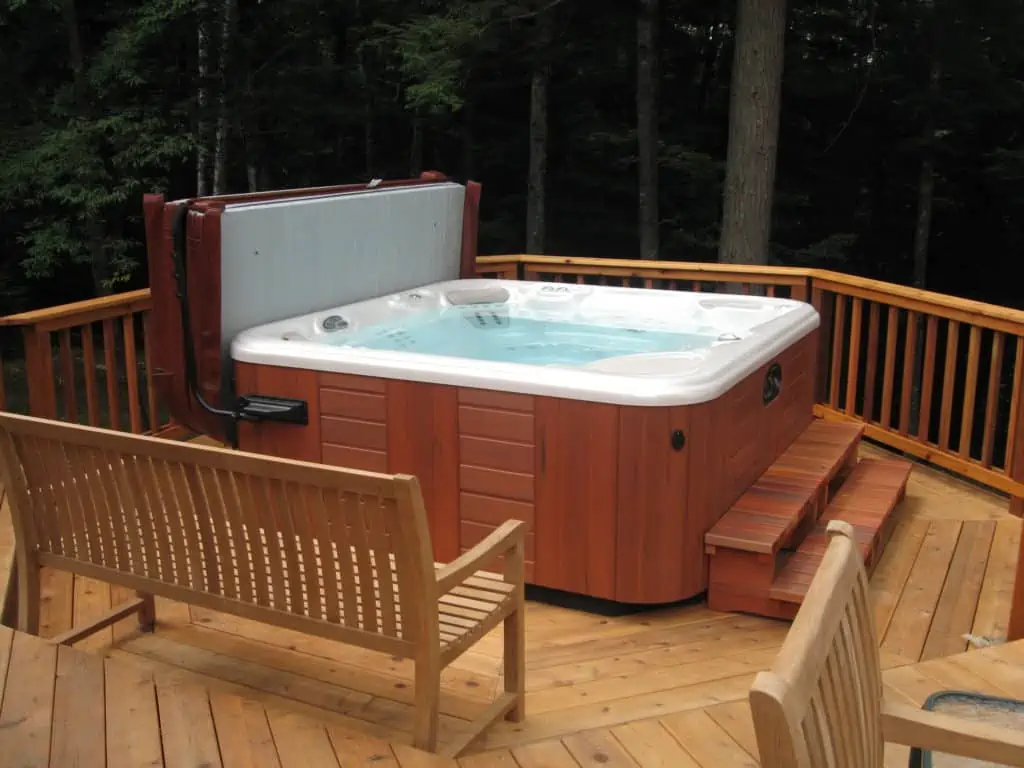
Hot tubs generally weigh 2,000 to 8,000 pounds, so it is important to make sure your base can support the weight. You should speak with a qualified building contractor or structural engineer to assess the floor load. They will help you work out how to determine if a deck can support a hot tub. Then, you can plan for the support your new spa will require.
Indoor models generally sit on a concrete floor or a reinforced subfloor. For new installations, check your local requirements to see if you need building permits for any structural work on your home.
Outdoor hot tubs are installed on either a concrete slab or a wooden deck. If you don’t have a concrete slab already, then you should plan your delivery and installation to include time for pouring and curing the concrete. Wooden decks may need to be reinforced to bear the weight of the water, tub, and people inside.
4. Assure Plenty of Drainage and Waterproofing
There are at least two ways water could become a problem for your house or outdoor living space: splashes and water build-up. People getting in and out of the hot tub will drip water along the way, children playing can spray water, and using swim spas can splash water all over the place. Incidental overflow is also a regular occurrence you should plan for.
You’ll need to plan adequate drainage around your hot tub. Indoor installations will need drains in the floor to collect water and move it out of the room. Even with outdoor installations it is also important to keep the ground dry.
Here’s why:
- Standing water creates a safety risk because people can slip on tiles, concrete, or a wooden deck.
- Water allowed to sit on any surface can also seep through the waterproofing and cause damage to tiles, concrete, or wooden flooring.
- If something catastrophic happens (think 1000 gallon water leak), then you need a way to get rid of a lot of water very quickly.
For all these reasons, you need to ensure your installation includes good drainage channels to get rid of water regularly and quickly.
5. Create the Right Infrastructure For Your Electrical Requirements
During the installation process, you’ll need to assess the electrical needs and hire an electrician to properly hook up your hot tub. Most hot tubs need a separate circuit, extra power, and ease of access to be sure hot tub maintenance is as easy as possible.
Smaller hot tubs have fewer pumps and less heating requirements. Larger hot tubs, on the other hand, can need much more power to run their equipment. To accommodate this, you may need a larger power supply and dedicated breaker box.
You can read our article to determine how much electricity does a hot tub use.
6. Think About Maintenance From the First Day
Your new spa will need ongoing maintenance, so if you design your hot tub placement with maintenance in mind, you will thank yourself over and over again. As a simple example, you may have a filter to change or clean on a monthly basis. If your filter is at the back of a crowded equipment compartment and is difficult to reach, then you’re going to feel irritated every time you need to change it.
Plan for your maintenance by evaluating potential hot tub locations and equipment placement to make maintenance as easy as possible. Leave access room, create clear paths, and make sure you think through your maintenance routine carefully. Ask your hot tub dealer questions about maintenance so you have a good understanding of what to expect.
7. Place Your Hot Tub Where It Is Easy To Access Daily
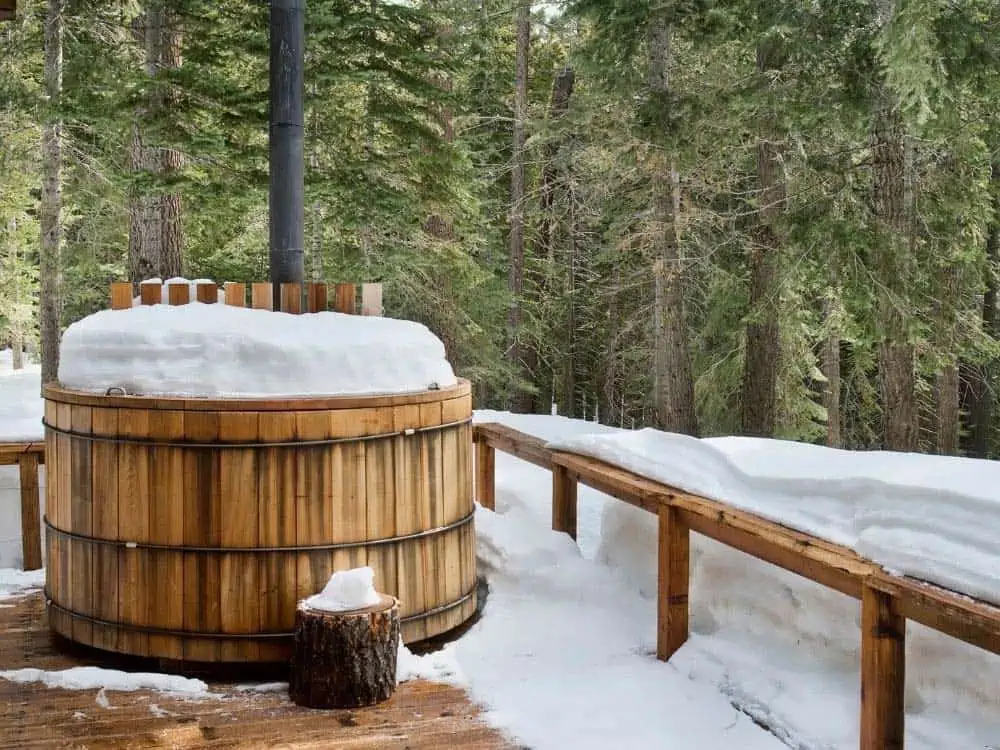
If you plan to use your hot tub on a regular basis, then you’ll want to plan your installation to make it easier to use it. Here are a few quick ideas about how to make your hot tub easier to use:
- Build a wide path, either indoors or outdoors, to make it easy to get to your new spa.
- Try to place an outdoor hot tub close to your door. Nobody likes a cold run through the backyard, so keeping your hot tub close will make you more likely to use your hot tub regularly.
- Include a way to remove and store your hot tub cover easily. Simply taking the cover off and putting it on again can be a little chore, so make it easy on yourself. Install a cover lifter and make sure there is clearance to operate the cover lifter.
8. Protect Your Privacy With Good Backyard Design
Good outdoor installations will include fences, privacy screens, and beautiful lighting design to keep prying eyes and nosy neighbors away from your soaking times and help you feel as comfortable as possible.
You may wish to consult with a professional. They may be able to use 3D landscape design tools to build a virtual installation and let you look at your architecture and design before you start. This should help you create a cohesive design scheme that looks great and also gives you maximum privacy.
9. Safety Is Your Responsibility
Hot tubs are great for fun, therapy, and relaxation, but they also present some safety risks. Even though your hot tub is in your backyard, or even in your home, safety is your responsibility.
Here are a few quick points to consider to ensure everyone stays safe:
- You may need extra doors, locks, and gates to prevent unwanted access. A backyard gate with a good lock should be sufficient.
- A baby gate can keep children and small pets away from a water hazard in cases of an indoor hot tub.
- The best safety feature is your cover. Most covers are too heavy for small children, so keeping your hot tub covered is a great way to ensure safety.
If safety is still a concern, read our blog “Is a hot tub safe for children?” for more in depth advice.
Hot Tub Placement Ideas
Now that we’ve covered the most important rules for installing a hot tub, let’s get to the exciting part and look at some inspiring ideas for how you can create your dream spa, personal retreat, or party spot.
In Ground Hot Tubs
You can create amazing spaces by installing a hot tub in the ground. While you may have to do a bit more work to dig out the space for the hot tub, you can build a superb spa retreat in your backyard.

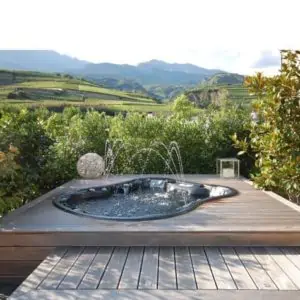
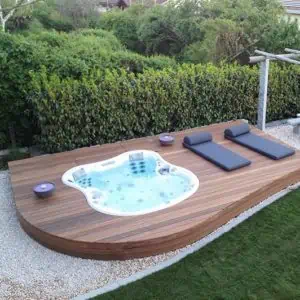
Half Above Ground Hot Tubs
Installing your hot tub partially above ground and partially in the ground gives you more options for waterfalls, decorative lighting, and connecting to other features, such as a full pool or BBQ deck.
We’ve got some great examples of this kind of installation.
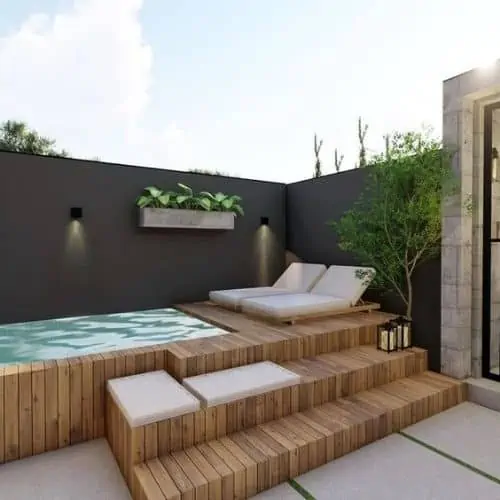

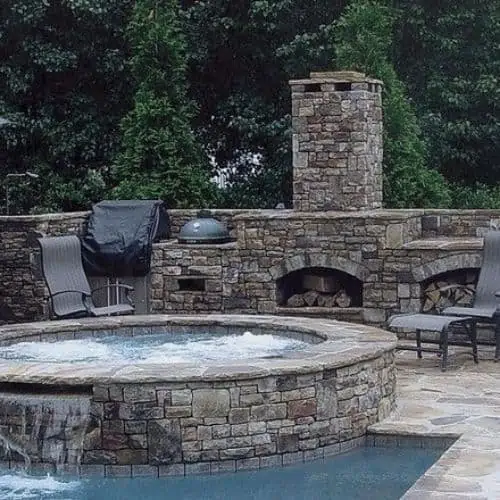
Split Level Installation
You can install your new hot tub with one side level with the ground and the other end exposed. This kind of split level installation is great for sloping backyards or spaces without much room for the installation.
Here are some inspiring ideas for how to create this perfect installation.

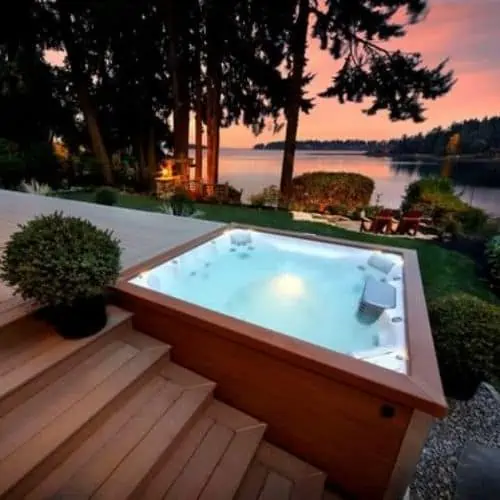

Above Ground Installation
Placing your hot tub on a concrete slab in the middle of your backyard can open up some inspiring design opportunities. You can surround it with beautiful items and decorations to create a garden retreat.
Here are some ideas for how you can create this effect.
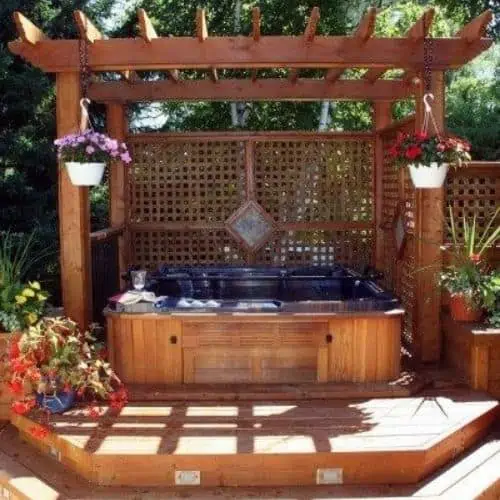

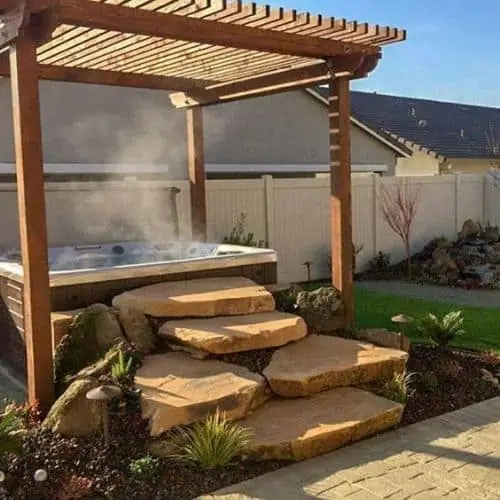
Conclusion
Following these simple rules and looking to these ideas for inspiration will help you create a brilliant hot tub retreat. Above ground, in ground, or anywhere in between, you can design the perfect oasis for your hot tub.

The Epic Hot Tubs Team is Here to Help!
If you’d like help choosing your hot tub and planning your installation, call us at 888-884-3742, visit our Raleigh or Durham showrooms, or fill out the form below to get in touch with a member of our team!
Manny Brambila
Manny has been in the Pool & Spa industry for over 15 years and is considered a pool, swim spa, & hot tub expert. He has been a Certified Pool & Spa Operator (CPO) since 2009 and worked 15 years in aquatic training and development for the largest pool chemical and customer care company. He also has been an outside consultant for the Pool and Spa industry in Chicago, New York and Los Angeles since 2018. In the past few years Manny has become Director of Operations for Epic Hot Tubs with a priority of providing customers with the most reliable information and best service possible.


